: 2025
: 2024
: 2023
: 2022
: 2021
: 2020
: 2019
: 2018
: 2017
: 2016
: 2015
: 2014
: 2013
: 2012
: 2011
: 2010
: 2009
: 2008
: 2007
:



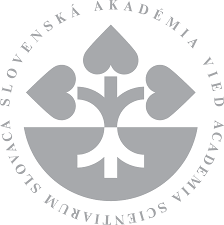


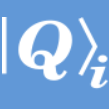
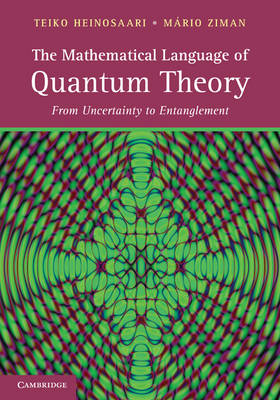
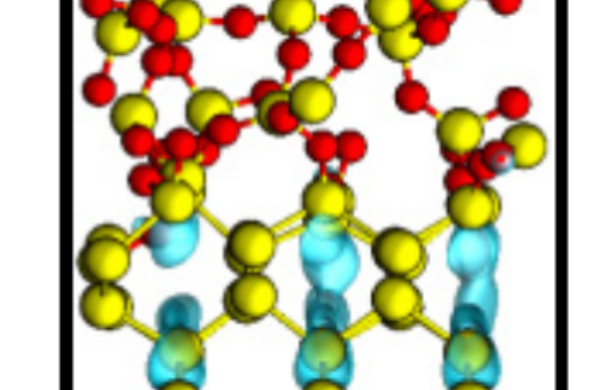 24.12.2024 Publication
24.12.2024 Publication
Coherence limit due to hyperfine interaction with nuclei in the barrier material of Si spin qubits
On the quest to understand and reduce environmental noise in Si spin qubits, hyperfine interactions between electron and nuclear spins impose a major challenge. Silicon is a promising host material because one can increase the spin coherence time by removing spinful 29 Si isotopes. As more experiments rely on isotopic purification of Si, the role of other spinful atoms in the device should be clarified. This is not a straightforward task, as the hyperfine interactions with atoms in the barrier layers are poorly understood. We use density-functional theory to determine the hyperfine tensors of both Si and Ge in a crystalline epitaxial Si/SiGe quantum well as well as Si and O atoms in an amorphous Si/SiO 2 (MOS) interface structure. On the basis of the results, we estimate the dephasing time T∗2 due to magnetic noise from the spin bath and show that the coherence is limited by interactions with non-Si barrier atoms to a few microseconds in Si/SiGe (for nonpurified Ge) and about 100 μs in Si-MOS. Expressing these numbers alternatively, we find in Si/SiGe the interactions with Ge dominate below a 29 Si content of 1000 ppm, and, due to low natural concentration of the spinful oxygen isotopes, the interactions with oxygen in Si-MOS become significant only below a 29 Si content of 1 ppm.
by
Lukas Cvitkovich, Peter Stano, Christoph Wilhelmer, Dominic Waldhör, Daniel Loss, Yann-Michel Niquet, and Tibor Grasser
Physical Review Applied 22, 064089 (2024) | +++ | |
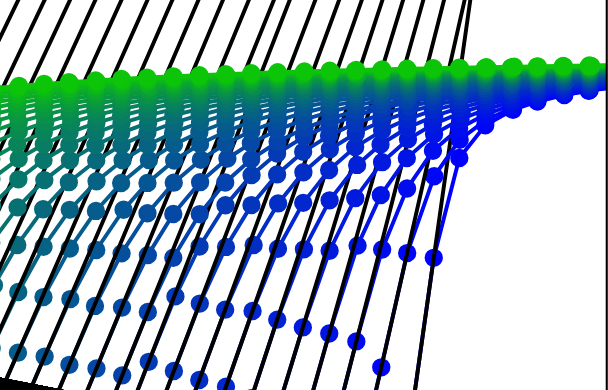 18.12.2024 Publication
18.12.2024 Publication
Optical and transport properties of NbN thin films revisited
Highly disordered NbN thin films exhibit promising superconducting and optical properties. Despite extensive study, discrepancies in its basic electronic properties persist. Analysis of the optical conductivity of disordered ultrathin NbN films, obtained from spectroscopic ellipsometry by the standard Drude-Lorentz model, provides inconsistent parameters. We argue that this discrepancy arises from neglecting the presence of quantum corrections to conductivity in the IR range. To resolve this matter, we suggest a modification to the Drude-Lorentz model, incorporating quantum corrections. The parameters obtained from the modified model are consistent with transport and superconducting measurements. The revisited values describing conduction electrons, which differ significantly from commonly adopted ones, are the electron relaxation rate B ≈ 1.8 eV/ ¯h, the Fermi velocity vF ≈ 0.7 × 10 6 ms−1 , and the electron density of states N (EF ) = 2 states of both spins/eV/Vf.u. .
by
Samuel Kern, Pavol Neilinger, Magdaléna Poláčková, Martin Baránek, Tomáš Plecenik, Tomáš Roch, Miroslav Grajcar
Physical Review B 110, 245131 (2024) | +++ | SiUCs (QUANTERA), skQCI |
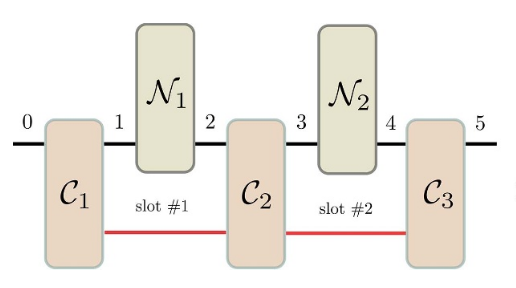 04.12.2024 Publication
04.12.2024 Publication
Higher-order incompatibility improves distinguishability of causal quantum networks
Higher-order quantum theory deals with causal quantum processes, described by quantum combs, and test procedures, described by quantum testers, ‘measuring’ these processes. In this work, we show that ‘jointly non-implementable’ or incompatible quantum testers perform better in distinguishability tasks than their compatible counterparts. To demonstrate our finding, we consider a specific two-party game based on distinguishing quantum combs. We show that the player does better at winning the game when they have exclusive access to incompatible testers over compatible ones. Moreover, we show that, using the resource theoretic measure convex weight, any general quantum resource present in testers is resourceful in quantum comb exclusion tasks. These investigations generalise, respectively, an earlier finding that incompatibility of quantum observables to be a bona fide resource in quantum state distinguishability tasks and another finding that any resource present in observables result in improved performance in state exclusion or antidistinguishability tasks.
by
Nidhin Sudarsanan Ragini, Sk Sazim
New Journal of Physics 26, 123003 (2024) | +++ | DEQHOST (APVV-22-0570), DESCOM (VEGA-2/0183/21) |
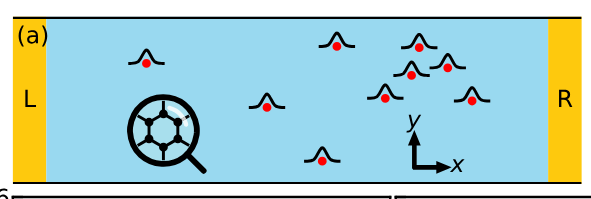 19.11.2024 Publication
19.11.2024 Publication
Magnetotransport and Spin-Relaxation Signatures of the Radial Rashba and Dresselhaus Spin-Orbit Coupling in Proximitized Graphene
Graphene-based van der Waals heterostructures take advantage of tailoring spin-orbit coupling (SOC) in the graphene layer by the proximity effect. At long wavelength—saddled by the electronic states near the Dirac points—the proximitized features can be effectively modeled by the Hamiltonian involving novel SOC terms and allow for an admixture of the tangential and radial spin-textures—by the so-called Rashba angle θR . Taking such effective models we perform realistic large-scale magnetotransport calculations—transverse magnetic focusing and Dyakonov-Perel spin relaxation—and show that there are unique qualitative and quantitative features allowing for an unbiased experimental disentanglement of the conventional Rashba SOC from its novel radial counterpart, called here the radial Rashba SOC. Along with that, we propose a scheme for a direct estimation of the Rashba angle by exploring the magneto response symmetries when swapping an in-plane magnetic field. To complete the story, we analyze the magnetotransport and spin-relaxation signatures in the presence of an emergent Dresselhaus SOC and also provide some generic ramifications about possible scenarios of the radial superconducting diode effect.
by
Wun-Hao Kang, Michael Barth, Andreas Costa, Aitor Garcia-Ruiz, Alina Mreńca-Kolasińska, Ming-Hao Liu and Denis Kochan
Phys. Rev. Lett. 133, 216201 (2024) | +++ | SUPERSPIN (IM-2021-26), DESCOM (VEGA-2/0183/21) |
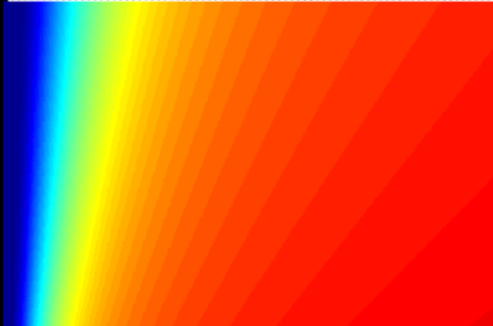 18.11.2024 Publication
18.11.2024 Publication
Tripartite measurement uncertainty in Schwarzschild space-time
The effect of Hawking radiation on tripartite measurement uncertainty in a Schwarzschild black hole background is analyzed in this study. Two scenarios are examined. In the first, quantum memory particles approach a Schwarzschild black hole and are positioned near the event horizon, while the particle being measured remains in the asymptotically flat region. In the second scenario, the measured particle moves toward the black hole, and the quantum memories stay in the asymptotically flat region. This study considers two initial quantum states, namely GHZ and W states. Our findings reveal that in both cases, measurement uncertainty increases steadily with rising Hawking temperature. When comparing the GHZ and W states, the GHZ state initially exhibits lower measurement uncertainty at low Hawking temperatures than the W state, indicating greater resilience to Hawking radiation. Additionally, when the quantum memories remain in the asymptotically flat region while the measured particle falls toward the black hole, the uncertainties for GHZ and W states do not align at high temperatures. The GHZ state consistently demonstrates lower measurement uncertainty, showcasing its superior robustness against Hawking radiation.
by
Hazhir Dolatkhah, Artur Czerwinski, Asad Ali, Saif Al-Kuwari, Saeed Haddadi
Eur. Phys. J. C 84, 1162 (2024) | +++ | DESCOM (VEGA-2/0183/21) |
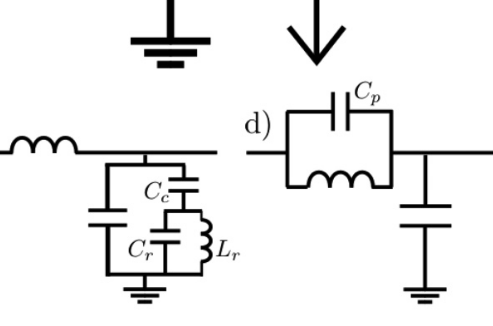 06.11.2024 Publication
06.11.2024 Publication
Josephson Traveling Wave Parametric Amplifiers with Plasma oscillation phase-matching
High gain and large bandwidth of traveling-wave parametric amplifier exploiting the nonlinearity of Josephson Junctions can be achieved by fulfilling the so-called phase-matching condition. This condition is usually addressed by placing resonant structures along the waveguide or by periodic modulations of its parameters, creating gaps in the waveguide’s dispersion. Here, we propose to employ the Josephson junctions, which constitute the centerline of the amplifier, as resonant elements for phase matching. By numerical simulations in JoSIM (and WRspice) software, we show that Josephson plasma oscillations can be utilized to create wave vector mismatch sufficient for phase matching as well as to prevent the conversion of the pump energy to higher harmonics. The proposed traveling wave parametric amplifier design has a gain of 15 dB and a 3 GHz bandwidth, which is comparable to the state-of-the-art TWPAs.
by
Emil Rizvanov, Samuel Kern, Pavol Neilinger, Miroslav Grajcar
J. Appl. Phys. 136, 174401 (2024) | +++ | SiUCs (QUANTERA) |
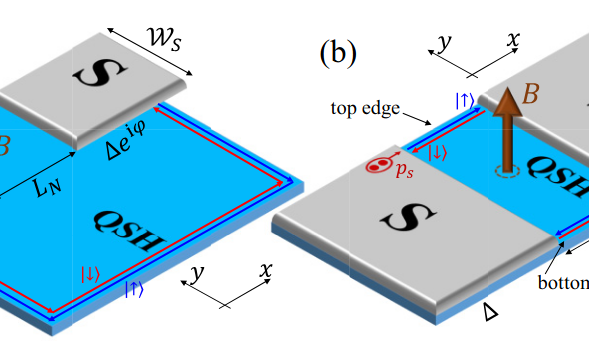 10.10.2024 Publication
10.10.2024 Publication
Superconducting Diode Effect in Quantum Spin Hall Insulator-based Josephson Junctions
The superconducting diode effect (SDE) is a magnetoelectric phenomenon where an external magnetic field imparts a nonzero center-of-mass momentum to Cooper pairs, either facilitating or hindering the flow of supercurrent depending on its direction. We propose that quantum spin Hall insulator (QSHI)-based Josephson junctions can serve as versatile platforms for nondissipative electronics exhibiting the SDE when triggered by a phase bias and an out-of-plane magnetic field. By computing the contributions from Andreev bound states and the continuum of quasiparticle states, we provide both numerical and analytical results scrutinizing various aspects of the SDE, including its quality Q factor. The maximum value of the Q factor is found to be universal at low (zero) temperatures, which ties its origin to underlying topological properties that are independent of the junction’s specific details. As the magnetic field increases, the SDE diminishes due to the closing of the induced superconducting gap caused by orbital effects. To observe the SDE, the QSHI-based Josephson junction must be designed so that its edges are transportwise nonequivalent. Additionally, we explore the SDE in a more exotic yet realistic scenario, where the fermionic ground-state parity of the Josephson junction remains conserved while driving a current. In this 4π-periodic situation, we predict an enhancement of the SDE compared to its 2π-periodic, parity-unconstrained counterpart.
by
Benedikt Scharf, Denis Kochan, Alex Matos-Abiague
Phys. Rev. B 110, 134511 (2024) | +++ | SUPERSPIN (IM-2021-26), QuaSiModo (VEGA-2/0156/22) |
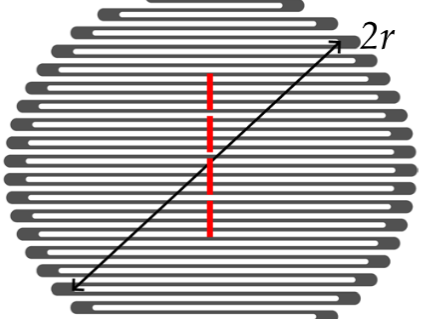 09.10.2024 Publication
09.10.2024 Publication
Numerical modeling of SNSPD absorption utilizing optical conductivity with quantum corrections
Superconducting nanowire single-photon detectors are widely used in various fields of physics and technology, due to their high efficiency and timing precision. Although, in principle, their detection mechanism offers broadband operation, their wavelength range has to be optimized by the optical cavity parameters for a specific task. We present a study of the optical absorption of a superconducting nanowire single photon detector with an optical cavity. The optical properties of the niobium nitride films, measured by spectroscopic ellipsometry, were modeled using the Drude–Lorentz model with quantum corrections. The numerical simulations of the optical response of the detectors show that the wavelength range of the detector is not solely determined by its geometry, but the optical conductivity of the disordered thin metallic films contributes considerably. This contribution can be conveniently expressed by the ratio of imaginary and real parts of the optical conductivity. This knowledge can be utilized in detector design.
by
Martin Baránek, Pavol Neilinger, Samuel Kern, Miroslav Grajcar
Opt. Quant. Electron. 56, 1730 (2024) | +++ | skQCI (101091548) |
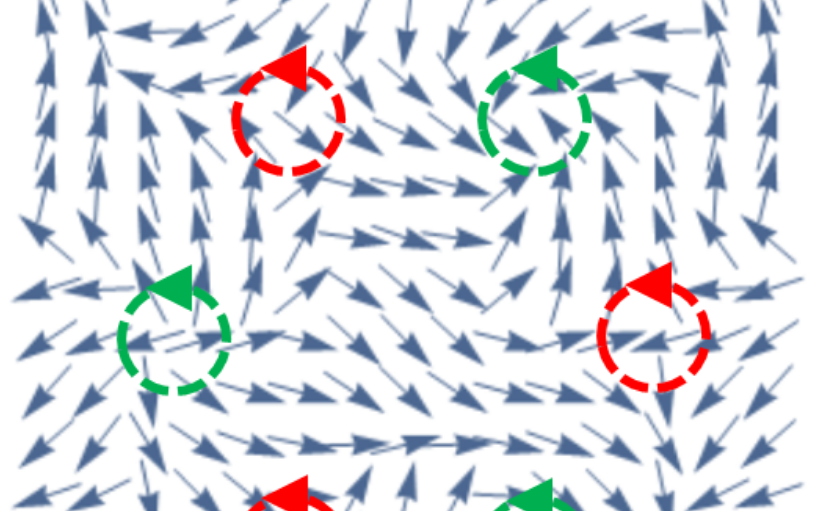 20.08.2024 Publication
20.08.2024 Publication
Detecting the spread of valence band Wannier functions by optical sum rules
The spread of valence-band Wannier functions in semiconductors and insulators is a characteristic property that gives a rough estimation of how insulating is the material. We elaborate that the gauge-invariant part of the spread can be extracted experimentally from optical conductivity and absorbance, owing to their equivalence to the quantum metric of the valence band states integrated over momentum. Because the quantum metric enters the matrix element of optical conductivity, the spread of valence-band Wannier functions in the gapped 3D materials can be obtained from the frequency-integration of the imaginary part of the dielectric function. We demonstrate this practically for typical semiconductors like Si and Ge, and for topological insulators like Bi 2 Te 3 . In 2D materials, the spread of Wannier functions in the valence bands can be obtained from the absorbance divided by frequency and then integrated over frequency. Applying this method to graphene reveals a finite spread caused by intrinsic spin-orbit coupling, which may be detected by absorbance in the microwave range. The absorbance of twisted bilayer graphene in the millimeter wave range can be used to detect the formation of the flat bands and quantify their quantum metric. Finally, we apply our method to hexagonal transition metal dichalcogenides MX2 (M = Mo, W; X = S, Se, Te) and demonstrate how other effects like excitons and higher energy bands can affect the spread of Wannier function.
by
Luis F. Cárdenas-Castillo, Shuai Zhang, Denis Kochan, Fernando L. Freire Jr., Wei Chen
Phys. Rev. B 110, 075203 (2024) | +++ | SUPERSPIN (IM-2021-26) |
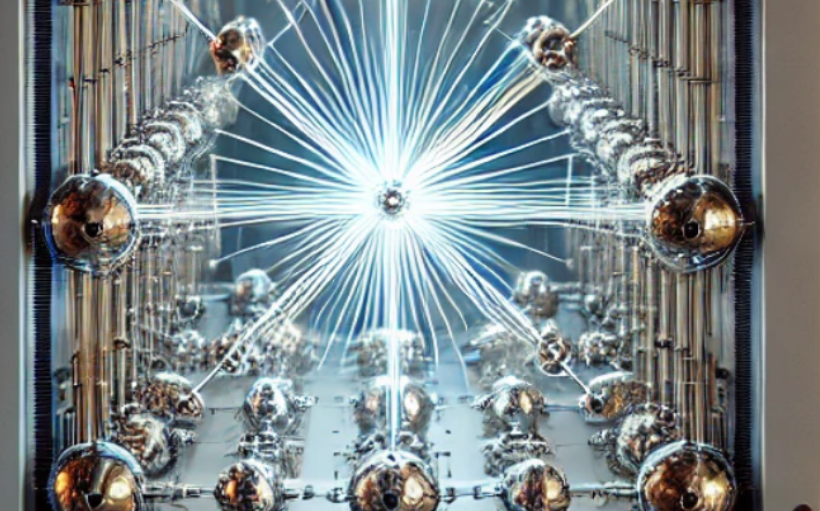 18.12.2024 Publication
18.12.2024 Publication
Whose Hylomorphism? Which Theory of Prime Matter?
Medieval interpretations of hylomorphism, in which substances are conceived as metaphysical composites of prime matter and substantial form, are receiving attention in contemporary philosophy. It has even been suggested that a recovery of Aquinas's conception of prime matter as a ‘pure potentiality’, lacking any actuality apart from substantial form, may be expedient in hylomorphic interpretations of quantum mechanics. In this paper, we consider a recent hylomorphic interpretation of non-relativistic quantum mechanics, the theory of Cosmic Hylomorphism, which does not explicitly invoke any notion of prime matter in its original formulation. We argue that prime matter does in fact play a role in constituting and individuating particles in this theory. However, we demonstrate that the notion of prime matter which features in the extended version of Cosmic Hylomorphism that we propose here is distinct from Aquinas's conception of prime matter, inasmuch as it has discrete metaphysical parts.
by
Matej Moško and William M. R. Simpson
Ancient Philosophy Today 6, 65-91 (2024) | +++ | |
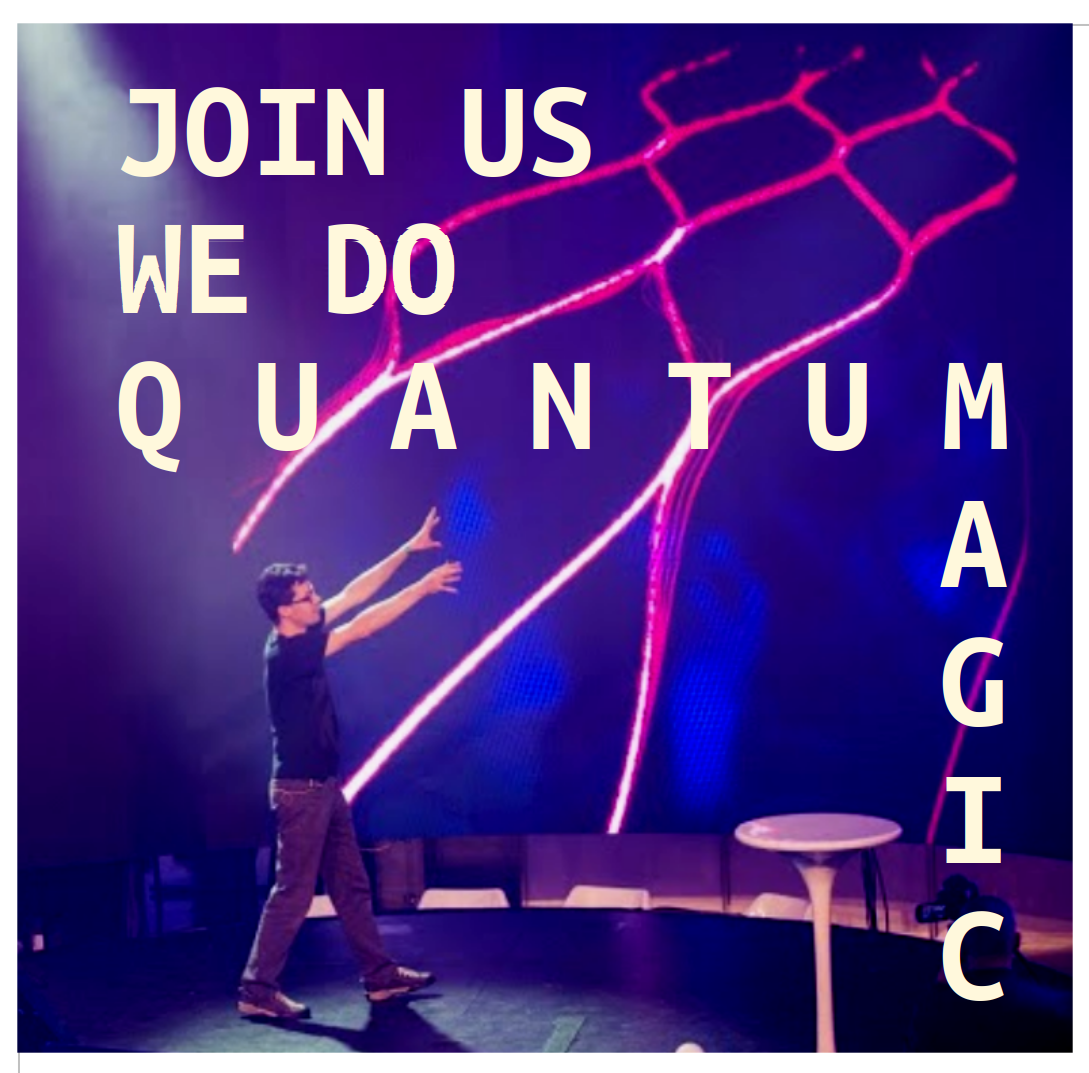 11.09.2024 Job positions
11.09.2024 Job positions
Postdoc vacations We are opening several positions for researchers experienced in quantum information science. If interested in quantum foundations, quantum communication, experimental quantum photonics, quantum simulations, quantum thermodynamics, or theoretical quantum superconductivity, pls send your CV and research statement to mario.ziman@savba.sk ideally before end of September. The income is between 2000-3500 eur (before taxation) depending on your expertise and also source of funding (Schwarz stipend ΞΞΞ, IPSAS fellowship ΞΞΞ, fellowqute ΞΞΞ, and various internal projects). Feel free to contact any of our key researchers to learn about their research interests. Successful applicants are expected to start in January 2025 and with duration between 12-36 months. |
 07.08.2024 Event
07.08.2024 Event
Summer school 2024: Quantum Technologies Under the umbrella of national quantum platform QUTE.sk our skQCI team is organizing hands-on summer schools on quantum technologies for interested students (high-school, or university) and curious non-specialists. The program will be accessible for anybody with high-school physics, math and informatics background and open-minded to learn basic tools, language and features of quantum technologies. More information is available at qute.sk website. https://qute.sk/portfolio/summer-school-2024-quantum-technologies/ Please register and join this quantum adventure. We are looking forward to meet you there. Time: August 19-23, 2024 Place: Faculty of Mathematics, Physics and Informatics, Comenius University, Mlynská dolina, Bratislava |
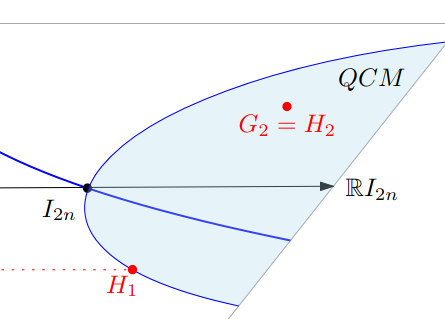 01.08.2024 Publication
01.08.2024 Publication
Generating random Gaussian states
We develop a method for the random sampling of (multimode) Gaussian states in terms of their covariance matrix, which we refer to as a random quantum covariance matrix (RQCM). We analyze the distribution of marginals and demonstrate that the eigenvalues of an RQCM converge to a shifted semicircular distribution in the limit of a large number of modes. We provide insights into the entanglement of such states based on the positive partial transpose (PPT) criteria. Additionally, we show that the symplectic eigenvalues of an RQCM converge to a probability distribution that can be characterized using free probability. We present numerical estimates for the probability of a RQCM being separable and, if not, its extendibility degree, for various parameter values and mode bipartitions.
by
Leevi Leppäjärvi, Ion Nechita, Ritabrata Sengupta
J. Math. Phys. 65, 082201 (2024) | +++ | SeMIOpT (SASPRO-2-945478), DEQHOST (APVV-22-0570), DESCOM (VEGA-2/0183/21) |
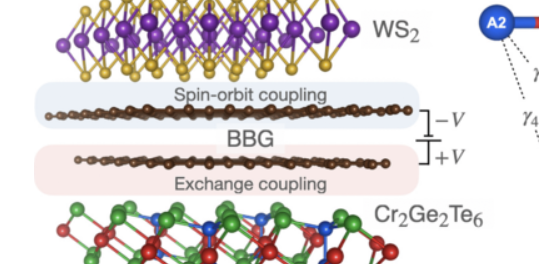 15.07.2024 Publication
15.07.2024 Publication
Swapping exchange and spin-orbit induced correlated phases in proximitized Bernal bilayer graphene
Ex-so-tic van der Waals heterostructures take advantage of electrically tunable layer polarization to swap proximity exchange and spin-orbit coupling in the electronically active region. Perhaps the simplest example is Bernal bilayer graphene (BBG) encapsulated by a layered magnet from one side and a strong spin-orbit material from the other. Taking WS2/BBG/Cr2Ge2Te6 as a representative ex-so-tronic device, we employ realistic ab initio inspired Hamiltonians and effective electron-electron interactions to investigate the emergence of correlated phases within the random phase approximation. We find that exchange and spin-orbit coupling induced Stoner and intervalley coherence instabilities can be swapped for a given doping level, allowing one to explore the full spectrum of correlated phases within a single device.
by
Yaroslav Zhumagulov, Denis Kochan, and Jaroslav Fabian
Phys. Rev. B 110, 045427 (2024) | +++ | IMPULZ IM-2021-26 (SUPERSPIN) |
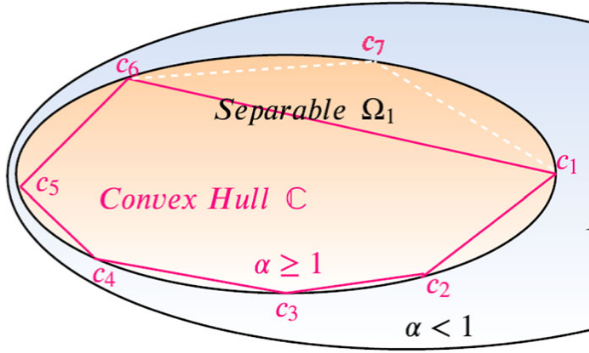 15.07.2024 Publication
15.07.2024 Publication
Trade-off between Bagging and Boosting for quantum separability-entanglement classification
Certifying whether an arbitrary quantum system is entangled or not, is, in general, an NP-hard problem. Though various necessary and sufficient conditions have already been explored in this regard for lower-dimensional systems, it is hard to extend them to higher dimensions. Recently, an ensemble bagging and convex hull approximation (CHA) approach (together, BCHA) was proposed and it strongly suggests employing a machine learning technique for the separability-entanglement classification problem. However, BCHA does only incorporate the balanced dataset for classification tasks which results in lower average accuracy. In order to solve the data imbalance problem in the present literature, an exploration of the boosting technique has been carried out, and a trade-off between the boosting and bagging-based ensemble classifier is explored for quantum separability problems. For the two-qubit and two-qutrit quantum systems, the pros and cons of the proposed random under-sampling boost CHA (RUSBCHA) for the quantum separability problem are compared with the state-of-the-art CHA and BCHA approaches. As the data are highly unbalanced, performance measures such as overall accuracy, average accuracy, F-measure, and G-mean are evaluated for a fair comparison. The outcomes suggest that RUSBCHA is an alternative to the BCHA approach. Also, for several cases, performance improvements are observed for RUSBCHA since the data are imbalanced.
by
Sanuja D. Mohanty, Ram N. Patro, Pradyut K. Biswal, Biswajit Pradhan, Sk Sazim
Quantum Information Processing 23, 273 (2024) | +++ | DEQHOST (APVV-22-0570), DESCOM (VEGA-2/0183/21) |
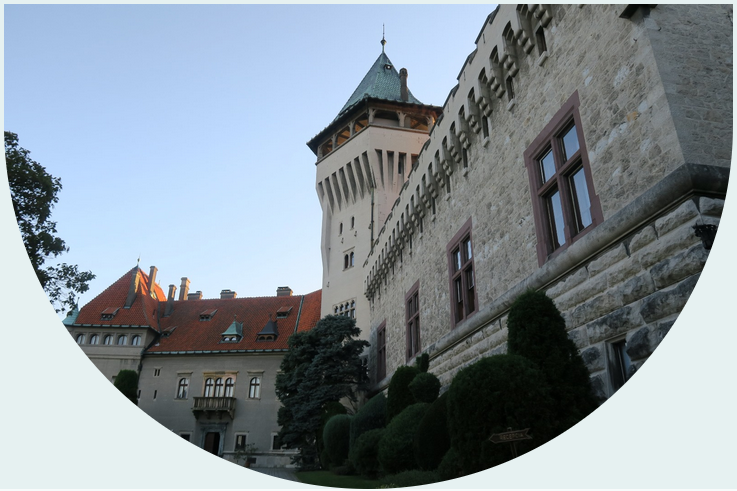 12.07.2024 workshop
12.07.2024 workshop
Time in Quantum Theory 2024 TiQT 2024 is the fourth annual edition of Time in Quantum Theory, this year held in beautiful Slovakia. The organisation is coordinated by Natalia S. Moller. The conference aims to bring together disparate communities, providing a common platform to discuss questions including: - Fundamental limitations to time keeping - Foundational aspects of time - How can we understand time through quantum experiments? Place: Smolenice Castle, Slovakia Time: September 10 - 13th, 2024 Web: http://quantum.physics.sk/tiqt2024/ |
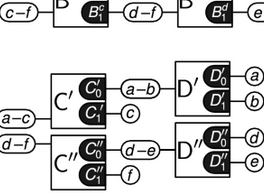 10.07.2024 Publication
10.07.2024 Publication
General measurements with limited resources and their application to quantum unambiguous state discrimination
In this report, we present a framework for implementing an arbitrary n-outcome generalized quantum measurement (POVM) on an m-qubit register as a sequence of two-outcome measurements requiring only single ancillary qubit. Our procedure offers a particular construction for the two-outcome partial measurements which can be composed into a full implementation of the measurement on any gate architecture. This implementation in general requires classical feedback; we present specific cases when this is not the case. We apply this framework on the unambiguous state discrimination and analyze possible strategies. In the simplest case, it gives the same construction as is known, if we opt for performing conclusiveness measurement first. However, it also offers possibility of performing measurement for one of the state outcomes first, leaving conclusiveness measurement for later. This shows flexibility of presented framework and opens possibilities for further optimization. We present discussion also on biased qubit case as well as general case of unambiguous quantum state discrimination in higher dimension.
by
Daniel Reitzner and Jan Bouda
Quantum Information Processing 23, 268 (2024) | +++ | VEGA 2/0183/21 (DESCOM) |
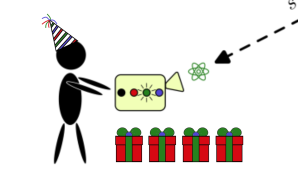 10.07.2024 Publication
10.07.2024 Publication
Encoding and decoding of information in general probabilistic theories
Encoding and decoding are the two key steps in information processing. In this work, we study the encoding and decoding capabilities of operational theories in the context of information-storability game, where the task is to freely choose a set of states from which one state is chosen at random and by measuring the state it must be identified; a correct guess results in as many utiles as the number of states in the chosen set and an incorrect guess means a penalty of a fixed number of utiles. We connect the optimal winning strategy of the game to the amount of information that can be stored in a given theory, called the information storability of the theory, and show that one must use so-called nondegradable sets of states and nondegradable measurements whose encoding and decoding properties cannot be reduced. We demonstrate that there are theories where the perfect discrimination strategy is not the optimal one so that the introduced game can be used as an operational test for super information storability. We further develop the concept of information storability by giving new useful conditions for calculating it in specific theories.
by
Teiko Heinosaari, Leevi Leppäjärvi and Martin Plávala
Int. J. Quantum Inf. 2440007 (2024) | +++ | VEGA 2/0183/21 (DESCOM) |
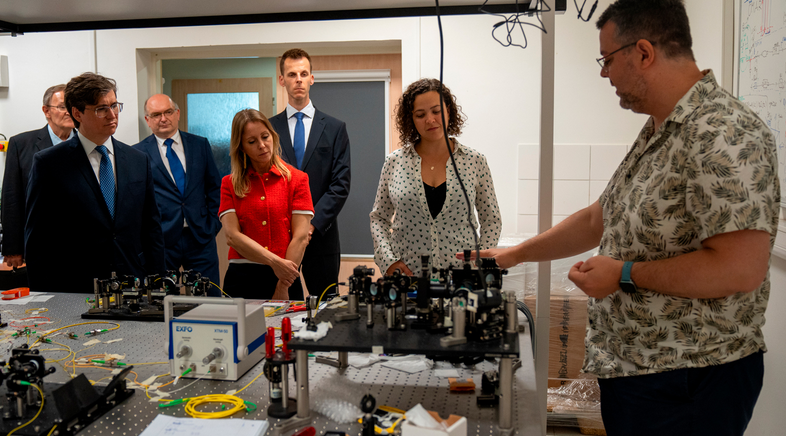 09.07.2024 event
09.07.2024 event
Visit from Brasilia During his friendly visit of Institute of Physics Gabriel Boff Moreira (Brasilian embasador) visited also our laboratories. We enjoyed this event a lot. Related qute story again. |
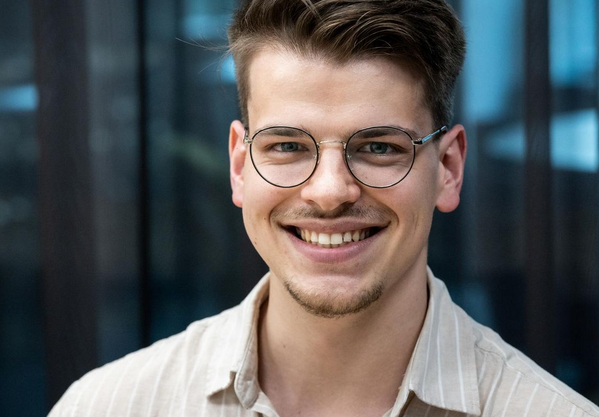 30.06.2024 Interview
30.06.2024 Interview
For a long time his research is senseless, but ... he is at RCQI now. Our PhD student Matej gave an inspiring interview for Slovak online medium aktuality.sk entitled "Our research does not make sense for a long. Then breakthrough discovery comes, says Slovak from University of Cambridge". Luckily, Matej is now at RCQI, where research makes sense ... Okay, at least we try. Read the original interview by Michaela Paulovič HΞRΞ (In Slovak, access required). |
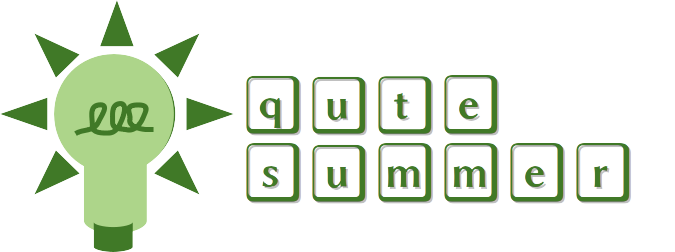 15.06.2024 Students
15.06.2024 Students
Students Interships Program 2024 at RCQI Interested to experience the research combined with summer? Do not hesitate to contact group leaders to learn possibilities and availability. We are looking forward for students interested in quantum theory foundations and technologies. The length of internships depends on the intensity, but ideally reserve at least four weeks (4 hours/day) between June and September. List of interns Vadym Shydkyi (Comenius University, Bratislava) - quantum superposition (M. Ziman) Dorota Porubská (Comenius University, Bratislava) - entanglement of many-body systems (A. Gendiar) Jakub Ulík (Oxford University, 19.8-15.9) - tensor networks (A. Gendiar) Gabriela Kotúčová (Gymnazium Angely Merici, Trnava) - entangled photons (D. Aktas) |
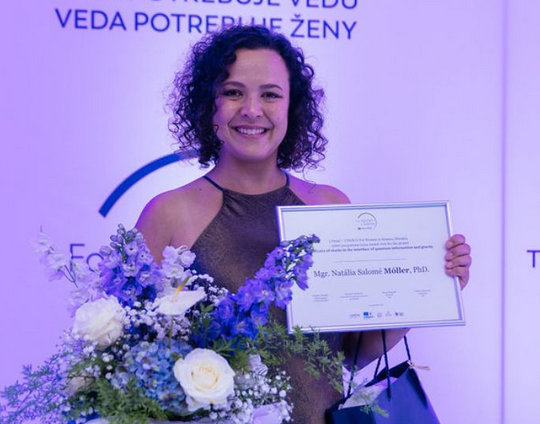 15.06.2024 Award
15.06.2024 Award
Congratulations to Natalia Salome Moller We are proud to inform that Natalia received the L’Oréal – UNESCO For Women in Science Award ... ta daa! Watch related youtube video ΞΞΞΞ and qute story. |
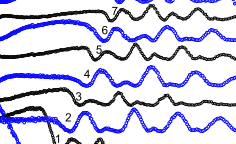 07.06.2024 Publication
07.06.2024 Publication
Josephson weak link based on proximity effect in long bi-metallic thin-film bridge
We prepared a bi-metal Sn/Al thin film bridge of 1 × 5 μm 2 in size and exposed it to microwave irradiation in a frequency range of 7 to 40 GHz to explore the Shapiro steps in the current-voltage characteristics, which served as a reliable indicator for assessing current-phase relation (CPR). The measurements were made in the temperature range (0.89 . . . 0.99)T c with T c = 3.66 K. No fractional steps are observed at 10 GHz, while all integer steps are present, and their widths oscillate with microwave field amplitude, which suggests a non-skewed quasi-sine CPR. Therefore, the normal-metal covering alters the resistive state of the long thin-film strip containing phase-slip centers so that the bi-metallic long bridge exhibits characteristics similar to a Josephson weak link. Considering a simple fabrication procedure, it may be utilized in making Josephson-effect-based devices such as DC and RF SQUIDs, especially in low-budget projects. Additional small-scale oscillations of the step widths found between the main peaks and the missing first step at a higher frequency of 20 GHz near T c may be associated with Landau–Zener transitions between Andreev states and require further detailed study.
by
O. G. Turutanov, A. G. Sivakov, A. S. Pokhila, and M. Grajcar
AIP Advances 14, 065214 (2024) | +++ | NONE |
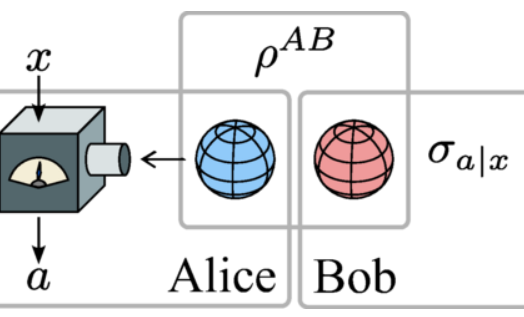 03.06.2024 Publication
03.06.2024 Publication
Semi-device-independent certification of the number of measurements
We develop a method for semi-device-independent certification of the number of measurements. We achieve this by testing whether Bob's steering equivalent observables can be simulated by 𝑘 measurements, which we do by testing whether they are 𝑘-compatible with separable joint observable. This test can be performed with the aid of hierarchy of semidefinite programs, and whenever it fails one can conclude that Alice must have access to at least (𝑘+1)-incompatible measurements.
by
Isadora Veeren, Martin Plávala, Leevi Leppäjärvi, and Roope Uola
Phys. Rev. A 109, 062203 (2024) | +++ | SASPRO 2 No. 945478, APVV-22-0570 (DeQHOST), VEGA 2/0183/21 (DESCOM) |
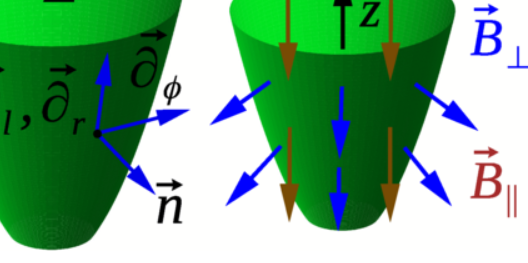 28.05.2024 Publication
28.05.2024 Publication
Dirac Landau levels for surfaces with constant negative curvature
Studies of the formation of Landau levels based on the Schrödinger equation for electrons constrained to curved surfaces have a long history. These include as prime examples surfaces with constant negative curvature, like the pseudosphere [A. Comtet, Ann. Phys. 173, 85 (1987)]. Now, topological insulators, hosting Dirac-type surface states, provide a unique platform to experimentally examine such quantum Hall physics in curved space. Hence, extending previous work we consider solutions of the Dirac equation for the pseudosphere for both the case of an overall perpendicular magnetic field and a homogeneous coaxial, thereby locally varying, magnetic field. For both magnetic-field configurations, we provide analytical solutions for spectra and eigenstates. For the experimentally relevant case of a coaxial magnetic field we find that the Landau levels split and one class shows a peculiar scaling ∝𝐵1/4, thereby characteristically differing from the usual linear 𝐵 and 𝐵1/2 dependence of the planar Schrödinger and Dirac case, respectively. We compare our analytical findings to numerical results that we also extend to the case of the Minding surface.
by
Maximilian Fürst, Denis Kochan, Ioachim-Gheorghe Dusa, Cosimo Gorini, and Klaus Richter
Phys. Rev. B 109, 195433 (2024) | +++ | IMPULZ IM-2021-26 (SUPERSPIN), VEGA 2/0156/22 (QuaSiModo) |
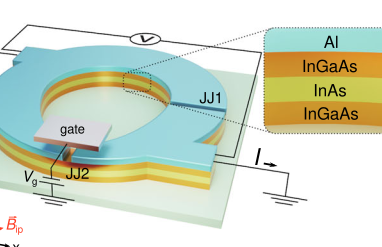 23.05.2024 Publication
23.05.2024 Publication
Link between supercurrent diode and anomalous Josephson effect revealed by gate-controlled interferometry
In Josephson diodes the asymmetry between positive and negative current branch of the current-phase relation leads to a polarity-dependent critical current and Josephson inductance. The supercurrent nonreciprocity can be described as a consequence of the anomalous Josephson effect —a φ 0 -shift of the current-phase relation— in multichannel ballistic junctions with strong spin-orbit interaction. In this work, we simultaneously investigate φ 0 -shift and supercurrent diode efficiency on the same Josephson junction by means of a superconducting quantum interferometer. By electrostatic gating, we reveal a direct link between φ 0 -shift and diode effect. Our findings show that spin-orbit interaction in combination with a Zeeman field plays an important role in determining the magnetochiral anisotropy and the supercurrent diode effect.
by
Simon Reinhardt, Tim Ascherl, Andreas Costa, Johanna Berger, Sergei Gronin, Geoffrey C. Gardner, Tyler Lindemann, Michael J. Manfra, Jaroslav Fabian, Denis Kochan, Christoph Strunk, Nicola Paradiso
Nature Communications 15, 4413 (2024) | +++ | IMPULZ IM-2021-26 (SUPERSPIN), VEGA 2/0183/21 (DESCOM) |
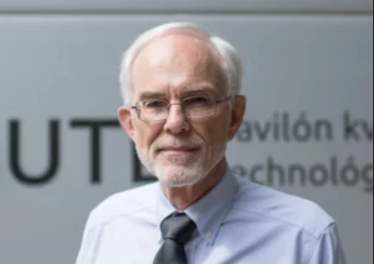 10.05.2024 CourseQute
10.05.2024 CourseQute
Introduction to quantum algorithms
These lectures are an introduction to quantum algorithms. The object is to provide a basis on which someone interested in the subject can build. The lectures aim to cover these topics:
1. Warm up – generating an eigenstate of an unknown Controlled-U gate 2. Deutsch-Jozsa algorithm (Basic algorithm, Effect of decoherence) 3. Berstein-Vazirani algorithm 4. Quantum search: Grover’s algorithm 5. Combining algorithms – testing linearity of Boolean functions 6. Quantum walks 7. Programmable processors Speaker: Prof. Mark Hillery
Mark Hillery, a distinguished physicist with a Ph.D. from the University of California, Berkeley, boasts a remarkable career spanning theoretical quantum optics and quantum information theory. Despite his extensive contributions, which include over 200 publications garnering more than 15,000 citations, Hillery remains notably modest, seemingly transported from his inner world of contemplation. His collaboration with the Slovak Academy of Sciences (SAS) has been particularly fruitful, marked by pioneering work on multi-user quantum cryptographic protocols and quantum bit cloning. This collaboration, spanning decades, has significantly influenced the development of physical science in Slovakia. Hillery, now a professor at Hunter College, City University of New York, was recently honored with the International Prize of the Slovak Academy of Sciences, further solidifying his legacy. In his spare time, Hillery indulges in his love for literature, jazz, and Slovak folk art, embodying a humility that belies his considerable achievements.
Time: June 10 - 14, 2024, everyday at 10:30 AM Place: Auditorium QUTE, Institue of Physics, Bratislava Lectures are MSc/PhD friendly, but open for all interested (Elementary Quantum Theory course is assumed) and free of charge. Please register HΞRΞ (no registration deadline) to receive all information. Organized and supported by Slovak National Center for Quantum Technologies QUTE.sk. |
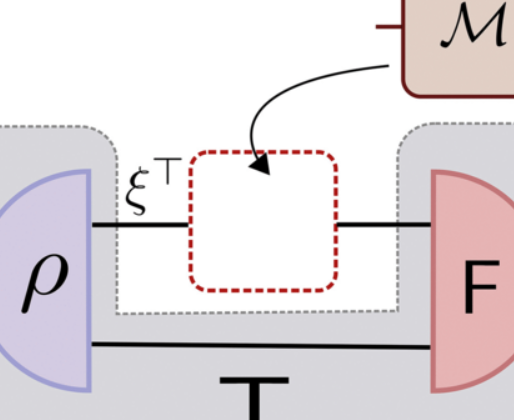 09.05.2024 Publication
09.05.2024 Publication
Single-shot labeling of quantum observables
We identify and study a particular class of distinguishability problems for quantum observables (positive-operator-valued measures), in which observables with permuted effects are involved, which we call the labeling problem. Consequently, we identify binary observables, which can be labeled perfectly. In this work, we study these problems in the single-shot regime.
by
Nidhin Sudarsanan Ragini and Mario Ziman
Phys. Rev. A 109, 052415 (2024) | +++ | APVV-22-0570 (DEQHOST), VEGA 2/0183/21 (DESCOM) |
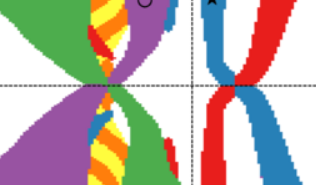 01.05.2024 Publication
01.05.2024 Publication
Emergent Correlated Phases in Rhombohedral Trilayer Graphene Induced by Proximity Spin-Orbit and Exchange Coupling
The impact of proximity-induced spin-orbit and exchange coupling on the correlated phase diagram of rhombohedral trilayer graphene (RTG) is investigated theoretically. By employing ab initio-fitted effective models of RTG encapsulated by transition metal dichalcogenides (spin-orbit proximity effect) and ferromagnetic
Cr2Ge2Te6 (exchange proximity effect), we incorporate the Coulomb interactions within the random-phase approximation to explore potential correlated phases at different displacement fields and doping. We find a rich spectrum of spin-valley resolved Stoner and intervalley coherence instabilities induced by the spin-orbit proximity effects, such as the emergence of a spin-valley-coherent phase due to the presence of valley-Zeeman coupling. Similarly, proximity exchange removes the phase degeneracies by biasing the spin direction, enabling a magnetocorrelation effect—strong sensitivity of the correlated phases to the relative magnetization orientations (parallel or antiparallel) of the encapsulating ferromagnetic layers.
by
Yaroslav Zhumagulov, Denis Kochan, and Jaroslav Fabian
Phys. Rev. Lett. 132, 186401 (2024) | +++ | IMPULZ IM-2021-26 (SUPERSPIN), VEGA 2/0183/21 (DESCOM) |
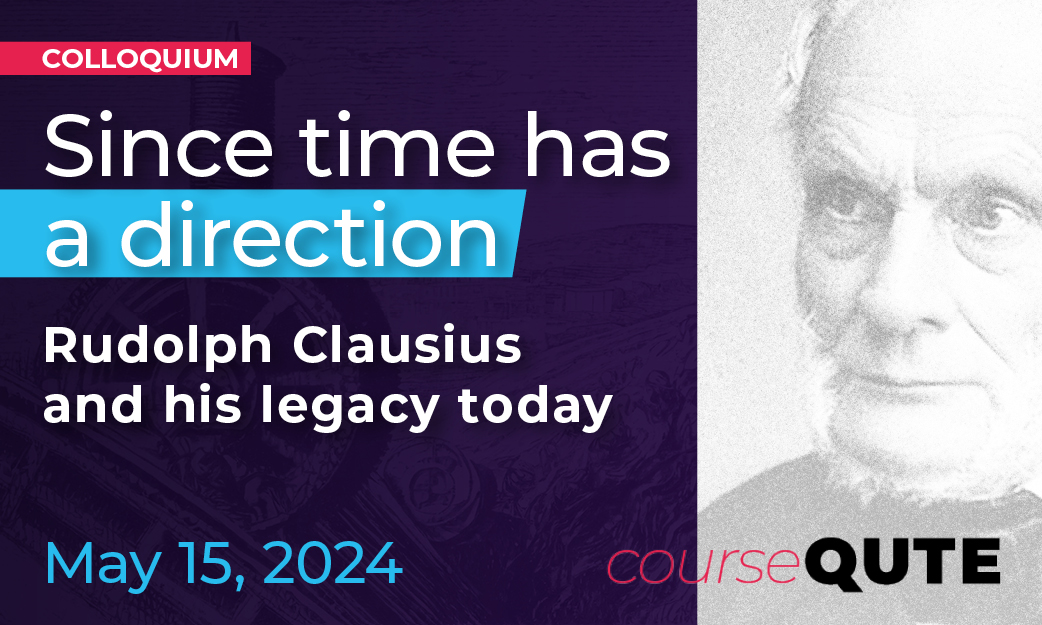 30.04.2024 Colloquium
30.04.2024 Colloquium
Since time has the direction - Rudolph Clausius and his legacy today
It is steam engines that marked the dawn of industrialization, yielding both benefits and headache causing challenges. Beyond their practical applications, steam engines profoundly shaped our understanding of the physical world. Among the key figures in this transformation was Rudolph Clausius, whose groundbreaking work during the mid-19th century significantly influenced our comprehension of energy and entropy. Despite his pivotal and broad contributions, Clausius remains somewhat underappreciated in today’s scientific community. His theories, however, serve as the bedrock connecting the microscopic and macroscopic realms, enabling us to control physical and chemical processes across various fields. Clausius was not only a physicist but also an early transdisciplinary scientist, bridging disciplines from physics to chemistry, information science, and economics. In this discussion, we’ll explore Clausius’s central insights, including his concept of the “motive force of heat” (now known as thermodynamics). We’ll delve into his role within the 19th-century scientific community and draw connections to our contemporary world.
Speaker: Prof. Dieter Meschede (University of Bonn, Germany)
Time: May 15th, 2024, 15:00 Place: Lecture hall B, Faculty of Mathematics, Physics and Informatics, Comenius University, Mlynská dolina, Bratislava Organized and supported by Slovak National Center for Quantum Technologies QUTE.sk and Humboldt Club SK. |
 24.04.2024Conference talk
24.04.2024Conference talk
Development of the Slovak National Quantum Communication Infrastructure
In this talk we will present both short-term and long-term vision for our national Slovak QCI infrastructure and put it in the context of the whole EuroQCI endeavour. We will present the latest results building up our quantum testbed with the support of the underlying SANET infrastructure.
Conference talk by Djeylan Aktas at BQIT 2024 workshop held in Bristol (United Kingdom). | +++ |
|
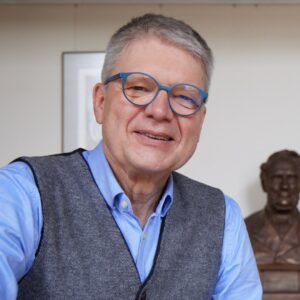 21.04.2024 CourseQute
21.04.2024 CourseQute
The Quantum World – From Experimental Insight to Technology
A tutorial lectures series on experiments introducing the audience into experimentally controlling quantum objects where single and many atoms will play a central role as simple model systems. This field started about 50 years ago when the non-intuitive world of quantum systems, especially the superposition principle, prompted experimenters to use lasers and light matter interaction to realize ever more illustrations of quantum phenomena. Over time those observations have turned into ever better control which today allows quantum engineers to apply simple quantum systems for tasks in quantum technology ranging from quantum sensing to simulation, communication and computing. The lectures will roughly follow this schedule but may be be adapted to the course of discussions:
• 13/05 09:15 - 10:45 What is Quantum? A General Introduction • 14/05 09:15 - 10:45 Illustrating Key Quantum Phenomena in Experiments • 15/05 09:15 - 10:45 Single and Few Atoms: Observing Simple Quantum Systems • 16/05 09:15 - 10:45 Controlling Quantum Systems • 17/05 09:15 - 10:45 Visions of Quantum Technology Speaker: Prof. Dieter Meschede
Prof. Dieter Meschede gained his Ph.D. in 1984 in physics from the Ludwig-Maximilians-Universität München, Since 1994, he is Full Professor of Physics at the University of Bonn, Germany and between 2018-2020 he was appointed as President of the German Physical Society (DPG). His research interests include the field of atomic, molecular and quantum physics. The so-called “conveyor belt of light” – it moves and sorts individual atoms with the aid of laser beams and radio frequency precision – is one of the outstanding research results of his research group. With the help of this “conveyor belt”, atoms could be used as an arithmetic unit for a quantum computer. This work has received great recognition with an Advanced ERC Grant (DQSIM).
Lectures are MSc/PhD friendly, but open for all interested (Elementary Quantum Theory course is assumed) and free of charge. Please register HΞRΞ (no registration deadline) to receive all information. Place: Auditorium QUTE, Institue of Physics, Bratislava Organized and supported by Slovak National Center for Quantum Technologies QUTE.sk. |
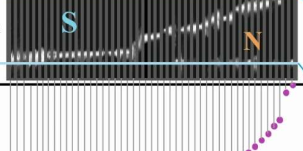 01.04.2024 Publication
01.04.2024 Publication
Some aspects of resistive-to-normal state transition by direct and microwave currents in superconducting thin films with phase slip lines
Based on analysis of current-voltage characteristics and imaging of the resistive state of thin-film tin strips using low-temperature laser scanning microscopy (LTLSM), the process of destruction of superconductivity by current and microwave irradiation with the formation and spatial rearrangement of the order parameter phase slip lines, and their transformation into discrete localized normal domains are shown. The prospects of LTLSM are considered from the point of view of the study of the high-frequency properties of superconducting structures and spatial characteristics in the pre-critical state for instrumental applications.
by
O. G. Turutanov, A. G. Sivakov, A. A. Leha, A. S. Pokhila, A. E. Kolinko, M. Grajcar
Low Temp. Phys. 50, 289–298 (2024) | +++ | NONE |
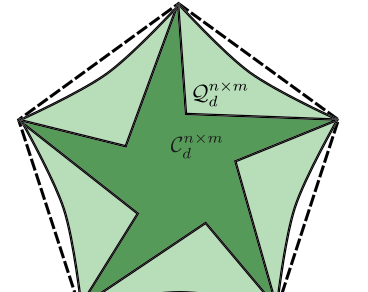 29.03.2024 Publication
29.03.2024 Publication
Simple information-processing tasks with unbounded quantum advantage
Communication scenarios between two parties can be implemented by first encoding messages into some states of a physical system which acts as the physical medium of the communication and then decoding the messages by measuring the state of the system. We show that already in the simplest possible scenarios it is possible to detect a definite, unbounded advantage of quantum systems over classical systems. We do this by constructing a family of operationally meaningful communication tasks, each of which, on the one hand, can be implemented by using just a single qubit but which, on the other hand, require an unboundedly larger classical system for classical implementation. Furthermore, we show that even though, with the additional resource of shared randomness, the proposed communication tasks can be implemented by both quantum and classical systems of the same size, the number of coordinated actions needed for the classical implementation also grows unboundedly. In particular, no finite storage can be used to store all the coordinated actions required to implement all possible quantum communication tasks with classical systems. As a consequence, shared randomness cannot be viewed as a free resource.
by
Teiko Heinosaari, Oskari Kerppo, Leevi Leppäjärvi, and Martin Plávala
Phys. Rev. A 109, 032627 (2024) | +++ | SASPRO2 1372/03/01 (SeMIOpT), APVV-22-0570 (DEQHOST), VEGA 2/0183/21 (DESCOM) |
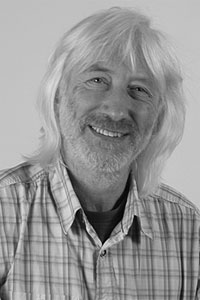 21.03.2024 CourseQute
21.03.2024 CourseQute
Quantum photonic device engineering
Series of 5x90 min lectures during 16-18th April covering topics
• Single photon interference and sources • Photon detectors and Photon counting technology • Photon statistics: sub-poissonian light and squeezed states • Multiphoton interference and limits to visibility • Applications to Quantum key distribution and Metrology • Linear optics quantum computation and simulation Lectures are MSc/PhD friendly, but open for all interested (Elementary Quantum Theory course is assumed) and free of charge. Please register HΞRΞ (no registration deadline) to receive all information. Speaker: Prof. John Rarity
Professor of Optical Communication Systems at the University of Bristol. He was one of the early pioneers for experimental quantum information science and performed original quantum cryptography and quantum network communication experiments using single photons and entanglement. He was awarded an ERC Advanced Grant and for his contributions to quantum optics he was elected fellow of the Royal Society in 2015.
Program: Tuesday 16/04 10:00-11:30, 13:30-15:00 Wednesday 17/04 10:00-11:30, 13:30-15:00 Thursday 18/04 10:00-11:30 Place: Auditorium QUTE, Institue of Physics, Bratislava Organized and supported by Slovak National Center for Quantum Technologies QUTE.sk. |
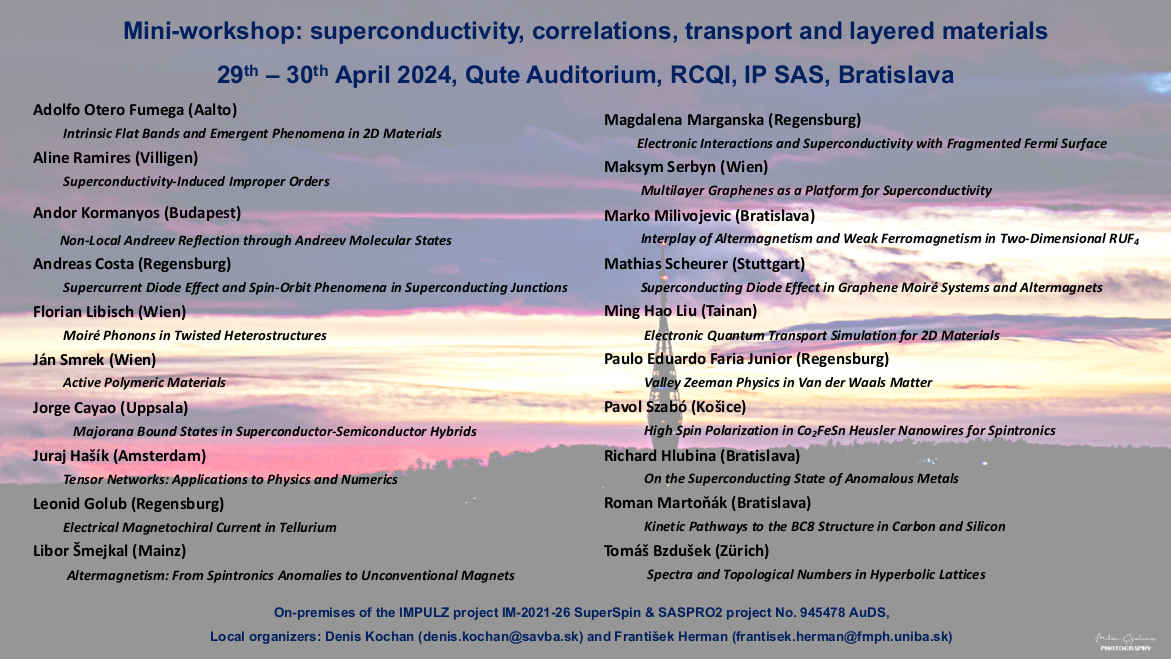 16.03.2024 Workshop
16.03.2024 Workshop
Mini-workshop: superconductivity, correlations, transport and layered materials 29-30/04/2024, Bratislava, Slovakia
As before, a small workshop targeting current topics from superconductivity, correlated systems, altermagnetism, transport, etc. We asked speakers for more pedagogical talks, accessible to students in master and PhD programs, of course this can not be quarantined :) ... Workshop is free of charge and is open for all people interested to learn new things, meet new people, interact friendly and so on. There is no formal registration, but in order to plan coffee breaks please send "I will come" to email denis.kochan@savba.sk). The collection of speakers is closed and no poster session is organized.
PROGRAM venue: Auditorium QUTE, Institue of Physics, Bratislava Monday, 29/04/2024 08:30 Registration/Administration duties 09:00 Andreas Costa (Regensburg): Supercurrent Diode Effect and Spin-Orbit Phenomena in Superconducting Junctions 09:40 Aline Ramires (Villigen): Superconductivity-Induced Improper Orders 10:20 Coffee 10:50 Ming Hao Liu (Tainan): Electronic Quantum Transport Simulation for 2D Materials 11:30 Florian Libisch (Wien): Moiré Phonons in Twisted Heterostructures 12:10 Lunch 13:40 Libor Šmejkal (Mainz): Altermagnetism: From Spintronics Anomalies to Unconventional Magnets 14:20 Mathias Scheurer (Stuttgart): Superconducting Diode Effect in Graphene Moiré Systems and Altermagnets 15:00 Marko Milivojevic (Bratislava): Interplay of Altermagnetism and Weak Ferromagnetism in Two-Dimensional RUF4 15:40 Coffee 16:10 Ján Smrek (Wien): Active Polymeric Materials 16:50 Pavol Szabó (Košice): High Spin Polarization in Co 2 FeSn Heusler Nanowires for Spintronics 17:30 Paulo Eduardo Faria Junior (Regensburg): Valley Zeeman Physics in Van der Waals Matter 18:10 End 19:30 Dinner (http://www.sundeck.sk) Tuesday, 30/04/2024 08:40 Promo project Impulz 09:00 Andor Kormanyos (Budapest): Non-Local Andreev Reflection through Andreev Molecular States 09:40 Jorge Cayao (Uppsala): Majorana Bound States in Superconductor-Semiconductor Hybrids 10:20 Coffee 10:50 Peter Makk 2D antiferromagnets under pressure 11:30 Leonid Golub (Regensburg): Electrical Magnetochiral Current in Tellurium 12:10 Lunch 13:40 Magdalena Marganska (Regensburg): Electronic Interactions and Superconductivity with Fragmented Fermi Surface 14:20 Maksym Serbyn (Wien): Multilayer Graphenes as a Platform for Superconductivity 15:00 Adolfo Otero Fumega (Aalto): Intrinsic Flat Bands and Emergent Phenomena in 2D Materials 15:40 Coffee 16:10 Tomáš Bzdušek (Zürich): Spectra and Topological Numbers in Hyperbolic Lattices 16:50 Roman Martoňák (Bratislava): Kinetic Pathways to the BC8 Structure in Carbon and Silicon 17:30 Juraj Hašík (Amsterdam): Tensor Networks: Applications to Physics and Numerics 18:10 End 18:45 Dinner (http://www.patronskypivovar.sk/) Orgs: Denis Kochan, František Herman supported by IMPULZ project IM-2021-26 SuperSpin and SASPRO2 project No. 945478 AuDS |
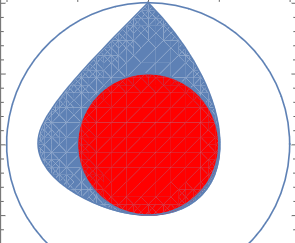 06.03.2024 Publication
06.03.2024 Publication
Bloch sphere analog of qudits using Heisenberg-Weyl Operators
We study an analogous Bloch sphere representation of higher-level quantum systems using the Heisenberg-Weyl operator basis. We introduce a parametrization method that will allow us to identify a real-valued Bloch vector for an arbitrary density operator. Before going into arbitrary d-level (d>=3) quantum systems (qudits), we start our analysis with three-level ones (qutrits). It is well known that we need at least eight real parameters in the Bloch vector to describe arbitrary three-level quantum systems (qutrits). However, using our method we can divide these parameters into four weight, and four angular parameters, and find that the weight parameters are inducing a unit sphere in fourdimension. And, the four angular parameters determine whether a Bloch vector is physical. Therefore, unlike its qubit counterpart, the qutrit Bloch sphere does not exhibit a solid structure. Importantly, this construction allows us to define different properties of qutrits in terms of Bloch vector components. We also examine the two and three-dimensional sections of the sphere, which reveal a non-convex yet closed structure for physical qutrit states. Further, we apply our representation to derive mutually unbiased bases (MUBs), characterize unital maps for qutrits, and assess ensembles using the Hilbert-Schmidt and Bures metrics. Moreover, we extend this construction to qudits, showcasing its potential applicability beyond the qutrit scenario.
by
Gautam Sharma, Sibasish Ghosh and Sk Sazim
Physica Scripta 99, 045105 (2024) | +++ | APVV-22-0570 (DEQHOST), VEGA 2/0183/21 (DESCOM) |
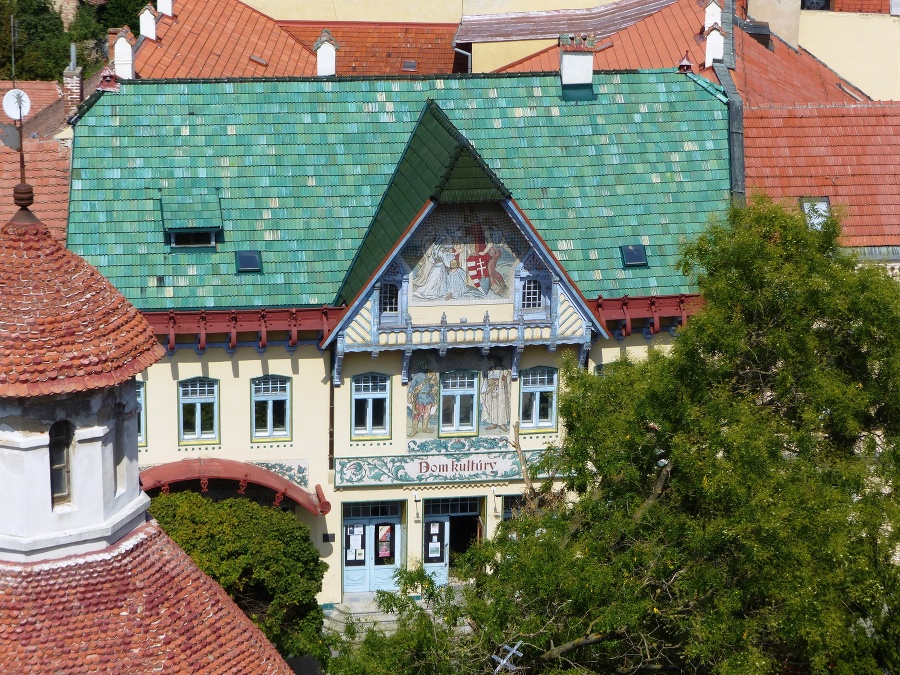 26.02.2024 Workshop
26.02.2024 Workshop
CEQIP 2024 Dear Bob, I did not see you for couple of months. How are you doing? Nevermind you forgot gifts for Christmas. I know you did research. Quantum research, of course. Any new algorithm? Not? Some cryptographic improvement? ... No? Some interesting calculation and new insight? Think about it. Remember CEQIP? Also not? Do not worry. No one remembers everything. See you in June. Your Sk.Alica http://ceqip.eu/2024/ |
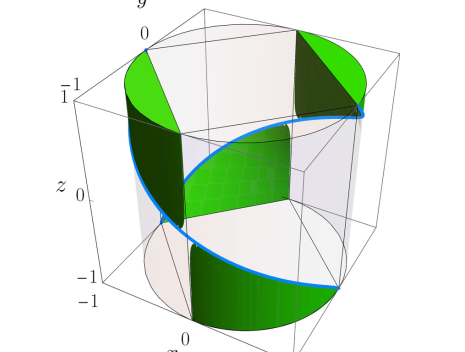 21.02.2024 Publication
21.02.2024 Publication
Advantages of quantum communication revealed by the reexamination of hyperbit theory limitations
Pawłowski and Winter’s hyperbit theory, proposed in 2012, presented itself as an alternative to quantum theory, suggesting novel ways of redefining entanglement and classical communication paradigms. This research undertakes a meticulous reevaluation of hyperbit theory, uncovering significant operational constraints that question its equivalence with quantum mechanics. Crucially, the supposition that hyperbit theory and quantum theory are equivalent relies on the receiver having unattainable additional knowledge about the sender’s laboratory, indicating that the work by Pawłowski and Winter is incorrect. This study accentuates the constraints of hyperbits in information processing and sheds light on the superiority of quantum communication, thereby advancing the investigation at the intersection of classical and quantum communication.
by
Giovanni Scala, Seyed Arash Ghoreishi, and Marcin Pawłowski
Phys. Rev. A 109, 022230 (2024) | +++ | VEGA 2/0183/21 (DESCOM) |
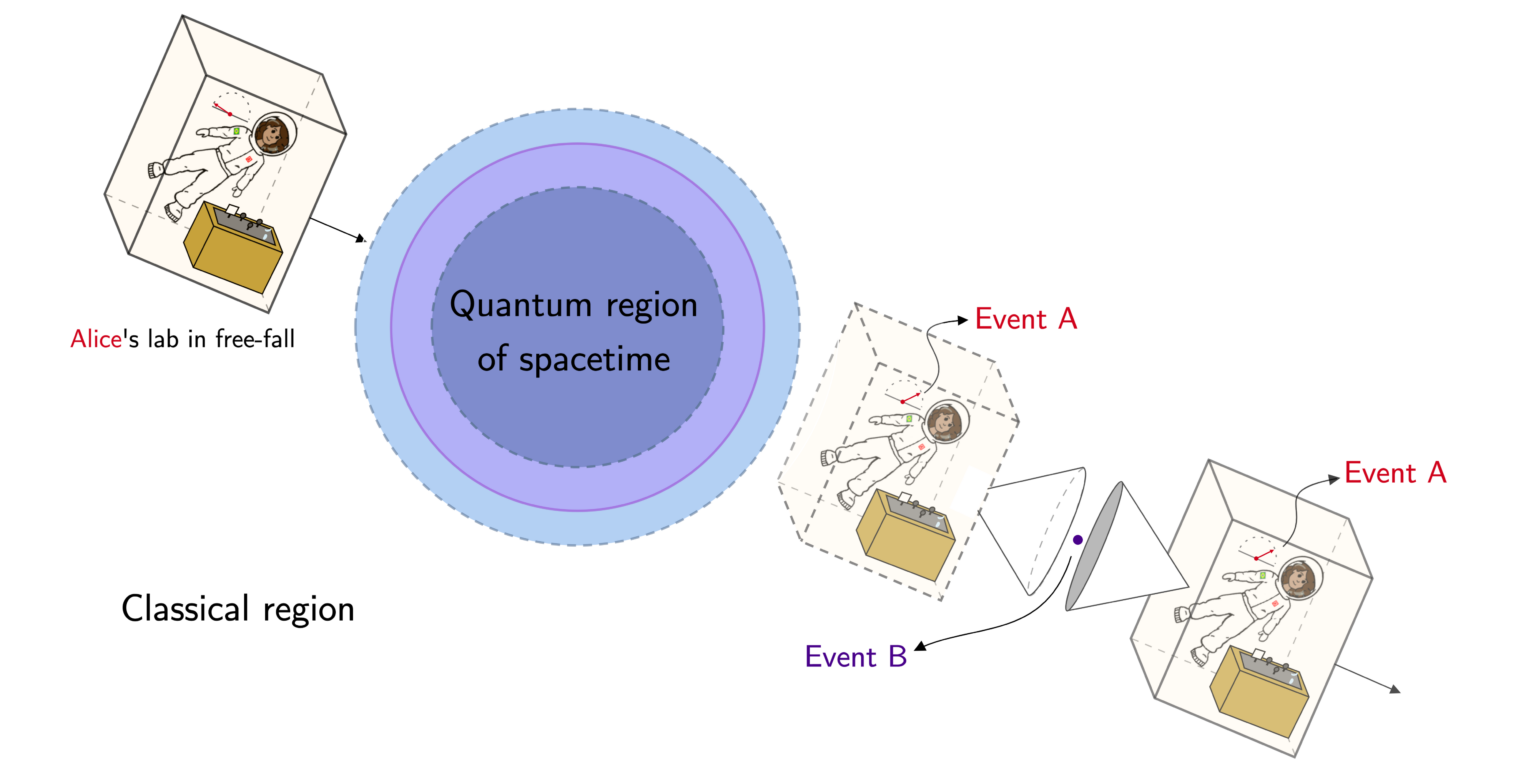 12.02.2024 Publication
12.02.2024 Publication
Gravitational quantum switch on a superposition of spherical shells
In the absence of a complete theory of quantum gravity, phenomenological models built upon minimal assumptions have been explored for the analysis of possible quantum effects in gravitational systems. Implications of a superposition of geometries have been considered in such models, including the occurrence of processes with indefinite order. In a gravitational quantum switch, in particular, the order of operations applied by two agents on a target system is entangled with the state of the geometry. We consider a model describing the superposition of geometries produced by distinct arrangements of spherical mass shells, and show that a protocol for the implementation of a gravitational quantum switch can be formulated in such a system. The geometries in superposition are identical in an exterior region outside a given radius, and differ within such a radius. The exterior region provides a classical frame from which the superposition of geometries in the interior region can be probed. One of the agents crosses the interior region and becomes entangled with the geometry, which is explored as a resource for the implementation of the quantum switch. Novel features of the protocol include the superposition of nonisometric geometries, the existence of a region with a definite geometry, and the fact that the agent that experiences the superposition of geometries is in free fall, preventing information on the global geometry to be obtained from within its laboratory.
by
Natália S. Móller, Bruna Sahdo, Nelson Yokomizo
Quantum 8, 1248 (2024) | +++ | Schwarz stipend, APVV-22-0570 (DeQHOST), VEGA 2/0183/21 (DESCOM), VEGA 2/0156/22 (QuaSiModo), JTF-61466 (QISS) |
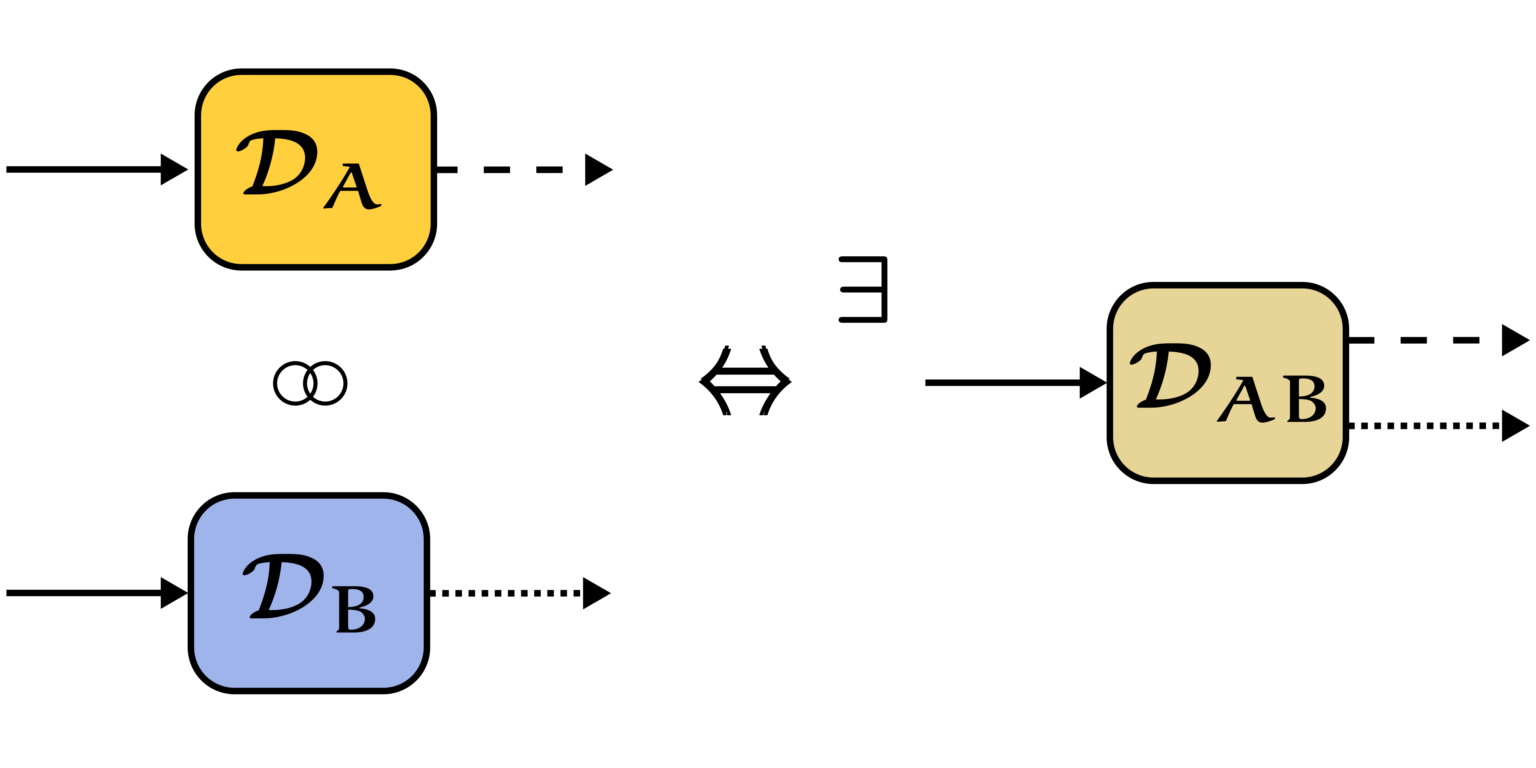 12.02.2024 Publication
12.02.2024 Publication
Incompatibility of quantum instruments
Quantum instruments describe outcome probability as well as state change induced by measurement of a quantum system. Incompatibility of two instruments, i. e. the impossibility to realize them simultaneously on a given quantum system, generalizes incompatibility of channels and incompatibility of positive operator-valued measures (POVMs). We derive implications of instrument compatibility for the induced POVMs and channels. We also study relation of instrument compatibility to the concept of non-disturbance. Finally, we prove equivalence between instrument compatibility and postprocessing of certain instruments, which we term complementary instruments. We illustrate our findings on examples of various classes of instruments.
by
Leevi Leppäjärvi, Michal Sedlák
Quantum 8, 1246 (2024) | +++ | SASPRO-2-945478, APVV-22-0570 (DeQHOST), VEGA 2/0183/21 (DESCOM) |
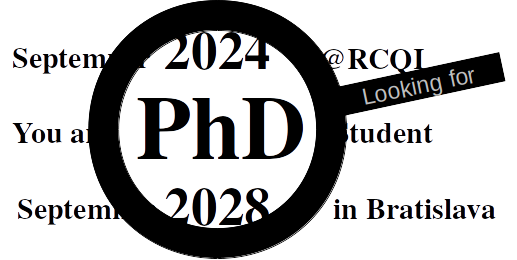 04.02.2024 Job opening
04.02.2024 Job opening
Looking for PhD in quantum technologies and foundations ΞΞΞ Are you a master/engineer student fascinated by quantum physics or future of quantum technologies? Want to understand quantum foundations, run quantum computers, build quantum systems, use quantum networks, or encrypt quantum messages? Interested to join our research team for four years of you life? That is the time it takes to do the research and become expert (with PhD title) in quantum simulations, or optical quantum communication networks, or quantum security, or foundations of quantum phenomena. All of these fields are waiting for your contribution. Currently, we have open several PhD positions at our Institute. We are open for your email ideally before 29/02/2024. As for the first step please get in contact with a potential PhD advisor (send him your cv, motivation letter and contacts to potential references), discuss the subject and follow his/her instructions. Do not wait until the submission deadline and do this as soon as possible. If you are uncertain who to contact, just choose any of us. We are all happy to help. \ΞΞΞ |
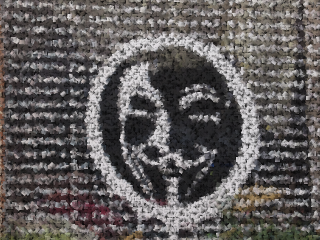 01.02.2024 Job opening
01.02.2024 Job opening
IPSAS fellowship call - seeking for a colleague Within the call for IPSAS fellowship we are looking for motivated postdoc, or a colleague willing to spent his/her sabbatical time with us. If interested please send your CV before February 29th (the sooner the better) directly to one of us. Choose the one who matches the best with your experience and interests. Making the right choice is part of the preselection process. If undecided email to ziman@savba.sk. Final interviews will happen in the second week of March. |
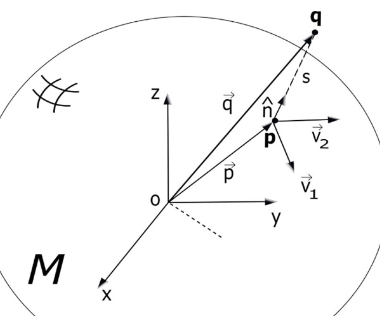 29.01.2024 Publication
29.01.2024 Publication
Bose-Einstein condensates and the thin-shell limit in anisotropic bubble traps
Within the many different models, that appeared with the use of cold atoms to create BECs, the bubble trap shaped potential has been of great interest. However, the relationship between the physical parameters and the resulting manifold geometry remains yet to be fully understood for the anisotropic bubble trap physics in the thin-shell limit. In this paper, we work towards this goal by showing how the parameters of the system must be manipulated in order to allow for a non-collapsing thin-shell limit. In such a limit, a dimensional compactification takes place, thus leading to an effective 2D Hamiltonian which relates to up-to-date bubble trap experiments. At last, the resulting Hamiltonian is perturbatively solved for both the ground-state wave function and the excitation frequencies in the leading order of deviations from a spherical bubble trap.
by
Elias J. P. Biral, Natália S. Móller, Axel Pelster, F. Ednilson A. dos Santos
New J. Phys. 26, 013035 (2024) | +++ | Schwarz stipend, APVV-18-0518 (OPTIQUTE), VEGA 2/0156/22 (QUASIMODO), JTF-61466 (QISS) |
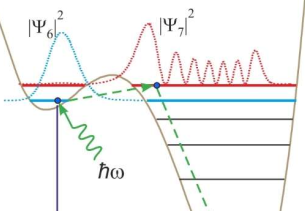 14.01.2024 Publication
14.01.2024 Publication
Design of deeply cooled ultra-low dissipation amplifier and measuring cell for quantum measurements with a microwave single-photon counter
The requirements and details of designing a measuring cell and low-back-action deeply-cooled amplifier for quantum measurements at 10 mK are discussed. This equipment is a part of a microwave single-photon counter based on a superconducting flux qubit. The high-electron mobility transistors (HEMTs) in the amplifier operate in unsaturated microcurrent regime and dissipate only 1 μW of dc power per transistor. Simulated amplifier gain is 15 dB at 450 MHz with a high-impedance (≈ 5 kΩ) signal source and standard 50-Ω output.
by
O. G. Turutanov, A. M. Korolev, V. I. Shnyrkov, A. P. Shapovalov, M. Baránek, S. Kern, V. Yu. Lyakhno, P. Neilinger, M. Grajcar
Low Temp. Phys. 50, 82–88 (2024) | +++ | |


